Can Quattrini’s 210 Lambretta kit match his legendary Vespa efforts? Dan and Stan took one for a spin to find out for themselves…

Hare and tortoise
Unlike some TV motoring shows there’s no need for Scootering to manufacture personalities for its contributors. While Dan’s never happier than when squeezing the last morsel of power out of an engine, pulling wheelies and getting his knee down, I’ve got very different requirements. A good scooter will take me and my luggage halfway across Europe and back with minimum drama. By minimum drama, I don’t just mean reliability — I also want something that doesn’t need a petrol tanker following close behind and I certainly don’t want to be revving it hard simply to set off without stalling. When Chiselspeed invited us to test one of the first roadworthy examples of a Quattrini 210 kitted Lambretta, I was fairly certain it would be Dan who would be enjoying himself the most.
Different thinking
When looking at a dyno test graph there are usually two forces measured. In very simple terms these are ‘torque’, the force that gets a scooter moving and ‘bhp’ the power that keeps it going. The problem with most tuned engines is that they tend to generate power at high revs.
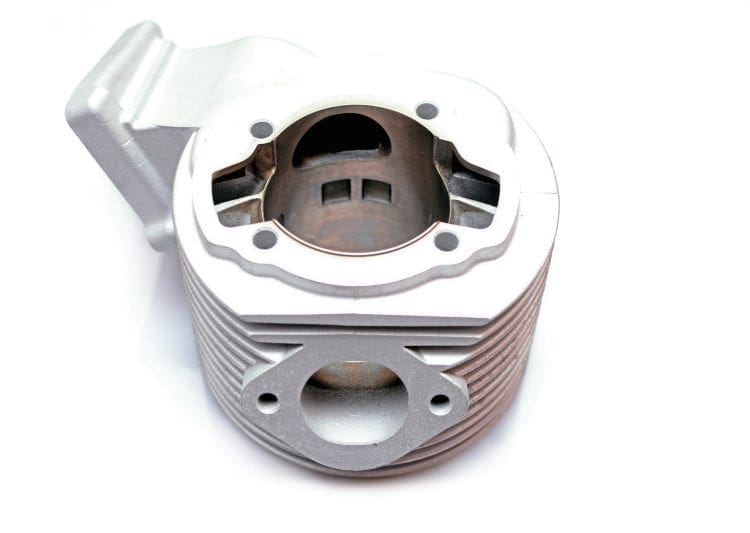
When someone with a street racer says their engine performs best when ridden hard they might not be bragging. The revs at which power’s generated has a big impact on the practicality and longevity of an engine. Running anything at high revs inevitably means more engine wear and of course increased fuel consumption. Producing a kit that delivers both the required torque at the lower end of the scale and the desired bhp at the top of the scale has been the holy grail of kit developers, and there has been mixed success over the years.
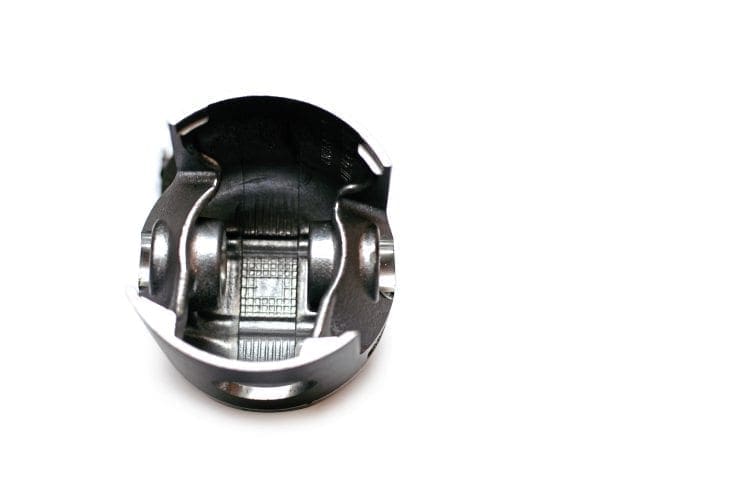
One universally accepted Lambretta tuning ‘fact’ is that for maximum output a 200cc (‘large block’) engine casing is non-negotiable. Boring out a 125/150 (‘small block’) barrel leaves the cylinder walls too thin for adequate cooling and the cylinder skirt becomes so thin that it breaks up in use. It’s for those reasons that 200cc casings are so sought after and as supplies of good original examples dry up it explains why so much money has been invested in creating new molds. It’s also why there’s an almost unending supply of unloved small block cases littering sheds across the country.
Max Quattrini is one of tuning’s more enigmatic figures. Little is known about the man but most people agree that he’s a genius and his Vespa kits have acquired something of a cult following. When it was announced that his next project would be a 210cc kit for the Lambretta small block, imaginations ran wild.

On picking up the kit, one thing’s immediately apparent: it’s not clear which way up the barrel goes. In order to eliminate the problem of overly thin skirts Max has done away with it entirely — well almost entirely. There’s a small lip around the barrel’s base to locate it. This means the whole mouth of the crankcase can be used, easily achieving 210cc.
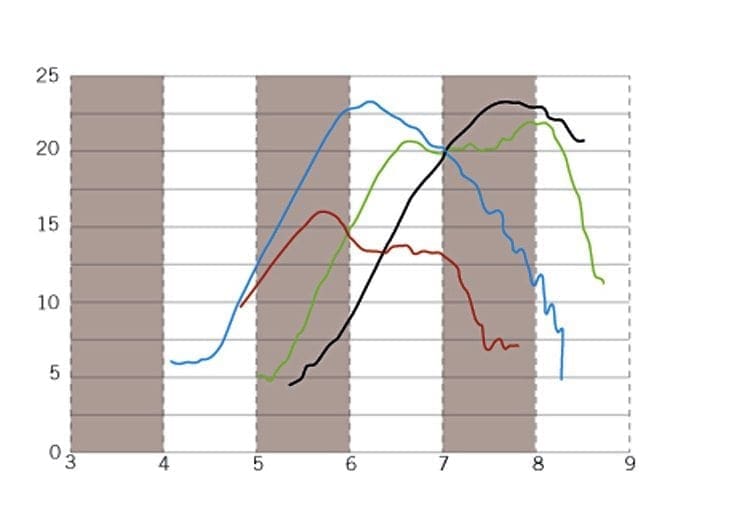
Also readily apparent is the manifold which is cast as part of the barrel. This eliminates the need for a baseplate, gives the necessary clearance for the reed valve to exit on the left side of the engine and means one less gasket joint to cause air leaks. They’re solutions to two of Lambretta tuning’s more intractable problems and so clever it’s a wonder that no-one’s thought of them before. Of course the big question is: ‘What does it ride like?’
Joy ride
First out of the gate was Dan, who returned after about 40 minutes with a big grin on his face. His only advice being: “Watch the roads, they’re awful, oh and the front end lifts straight away if you rev it.” My heart sank, it seemed all my preconceptions of tuned scooters would be reinforced.

The demo scooter started first kick and even though I fully expected to embarrass myself I thought I’d try a gentle start. I selected first and with a gentle application of throttle released the clutch. To my surprise it didn’t stall and I got under way without any complaint from the engine. At the first junction I tried a little more throttle and set off. I felt the front end lifting in both first and second but it was all very controlled. Wind it back when on the move and the engine responded immediately, snap it open and acceleration was brisk to say the least.
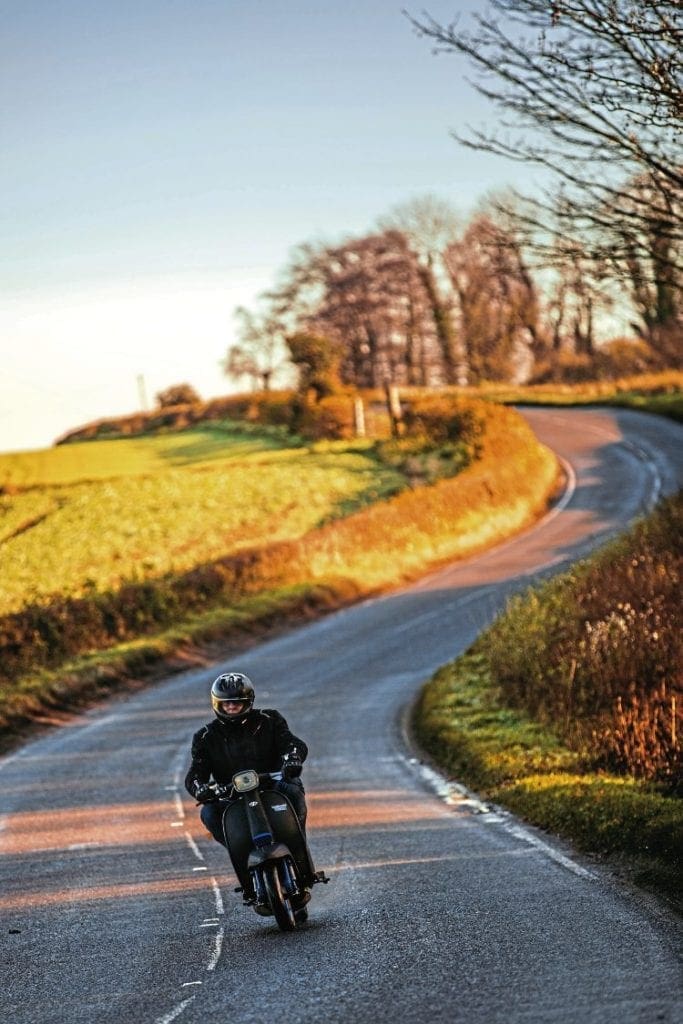
Despite Dan’s warning about the road surface I enthusiastically tackled a few twisties and the engine responded perfectly. It’s hard to remember that my role in this test wasn’t conversion to racer but to give the perspective of a steady rider. I switched into my normal riding style and the Quattrini delivered again as I made good progress without revving the engine hard. Riding out towards the A1 I was able to open things up. Overtakes in a 50 zone were effortless with the engine responding instantly to throttle, at this speed I didn’t even need to gear down. On longer stretches of open road I was leading the traffic flow but at very low revs. This was only a test ride but I suspect longer journeys at motorway speeds wouldn’t test the engine too hard. The motor had huge amounts of torque and despite being fitted with the hardest Ancillotti I’ve encountered in a while the ride was remarkably smooth. I found myself thinking how entertaining this kit would be for EuroLambretta and a journey over the Pyrenees….
Sedate is not a word I’d use to describe the Quattrini, Dan will cover the science part but thanks to its power distribution curve the whole set-up is user friendly. Whatever your riding style it delivers and after returning to base both Dan and I are happy. Once again, hats off to Max.
The right stuff
There’s no shortage of tuning exotica out there at the moment. In fact, it’s possible to buy close to 50bhp off the shelf. However, being able to afford the price of a small family car and then being capable enough to control that amount of power is another matter entirely.
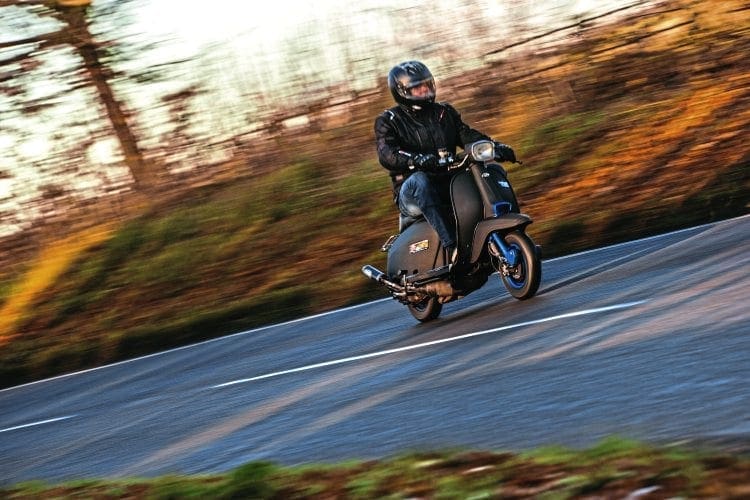
For 99% of riders the requirement is for an engine that’s safe in modern traffic conditions, doesn’t routinely destroy itself, has reasonable fuel consumption and is affordable to fit. Admittedly there are kits out there that hit many of those targets but the Quattrini 210 breaks new ground. By thinking differently Quattrini has produced a package that delivers affordable power in a way that suits the needs of both speed freaks and tourers alike. It’s said that you can’t please all the people all of the time but Quattrini may be about to disprove that.
Words: Stan
Photographs: Gary Chapman
WEIGHING THE JOB UP
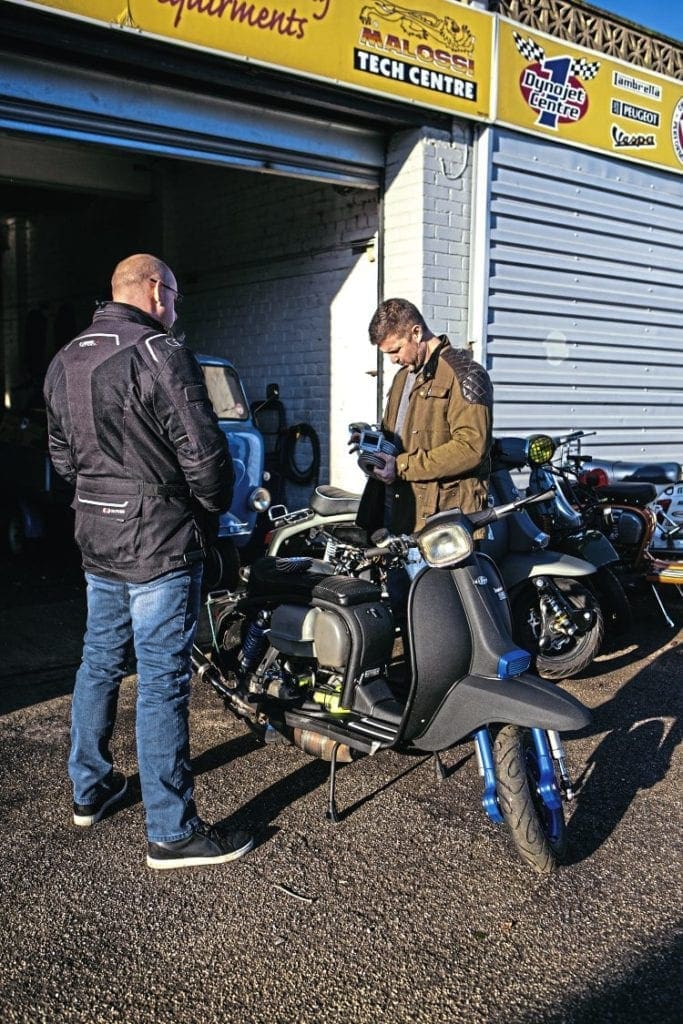
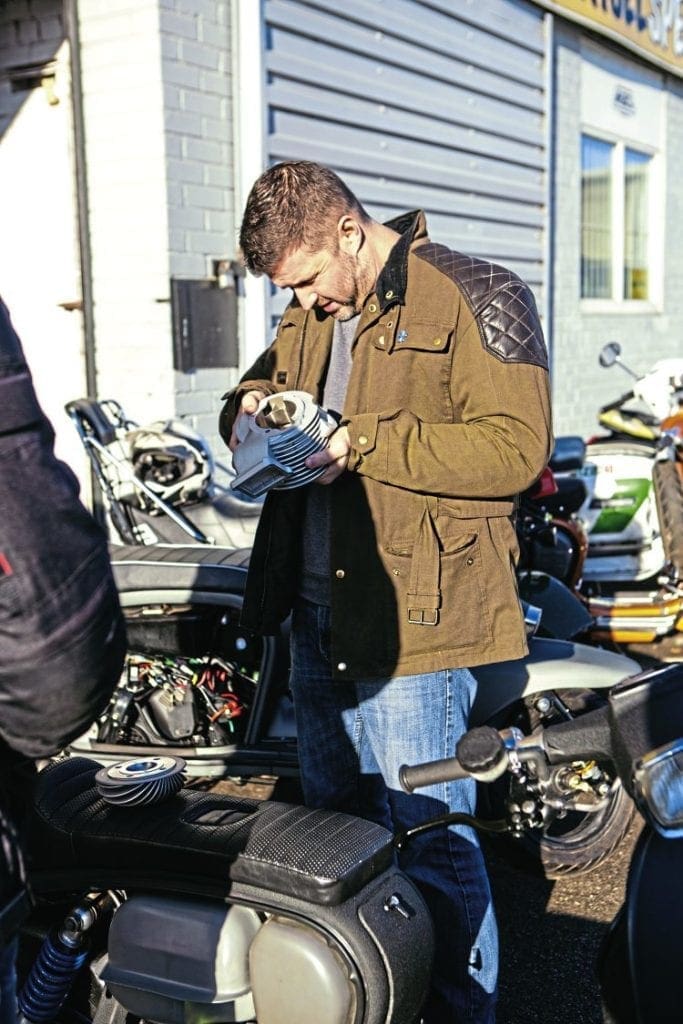
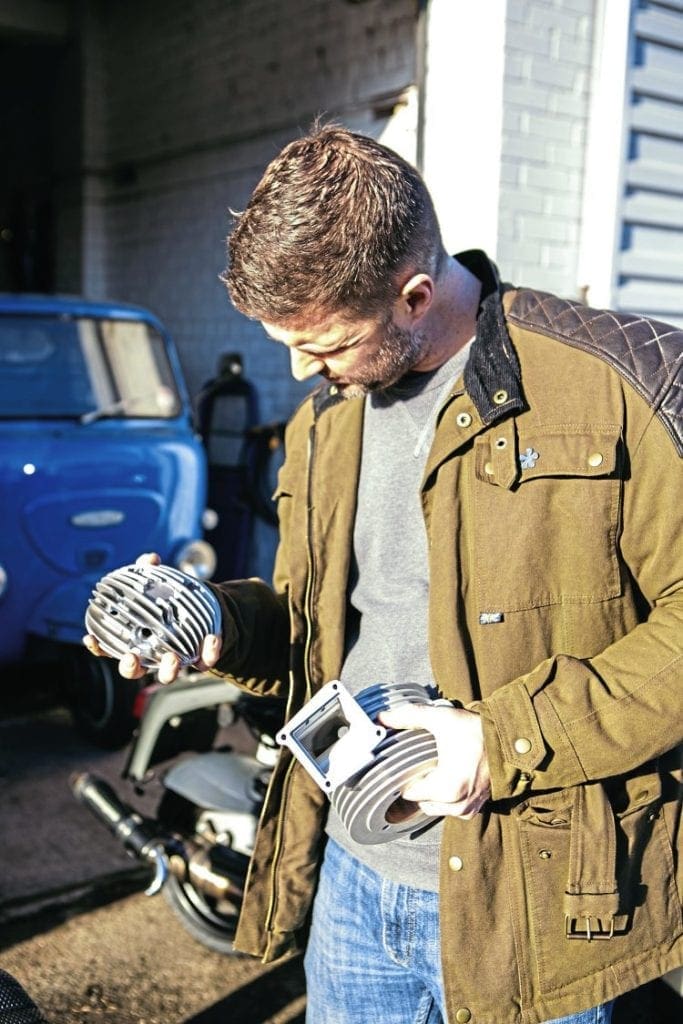
WHAT THE EDITOR HAS TO SAY ABOUT IT ALL…
Having worked on a number of Quattrini-based Vespa engines in the past, I was already aware of the thought and planning which Max puts into his cylinder designs… the Lambretta 210 proved no different. One thing that did surprise me though, was the power delivery. From my experience with the highly-strung small frame Vespas within the MQ stable, I was expecting nothing less than motocross style launches and high-revving madness… but much to my delight, this was not to be. I say ‘much to my delight’ because there seems to have been something akin to an ‘arms race’ recently, in terms of ever-increasing expectation of bhp, and sky-rocketing costs involved in obtaining more, more and… more. Therefore, to experience something quite different was very much of a pleasure. So… what’s it like?
It’s not like a crosser, not at all…
An inquisitive scooterist approached me on the subject recently, with the opening line: “So what’s the Lambretta Quattrini kit like? Same as his other stuff, all revs n’that… just like a crosser?” My reply to him was simply this: “No, to me a crosser would be something gutless at the bottom end needing a power-valve unit to try and regain that missing lower power range, before it launches into an arm-wrenching frenzy of revs and wheelies… the Quattrini is nothing like that at all.”
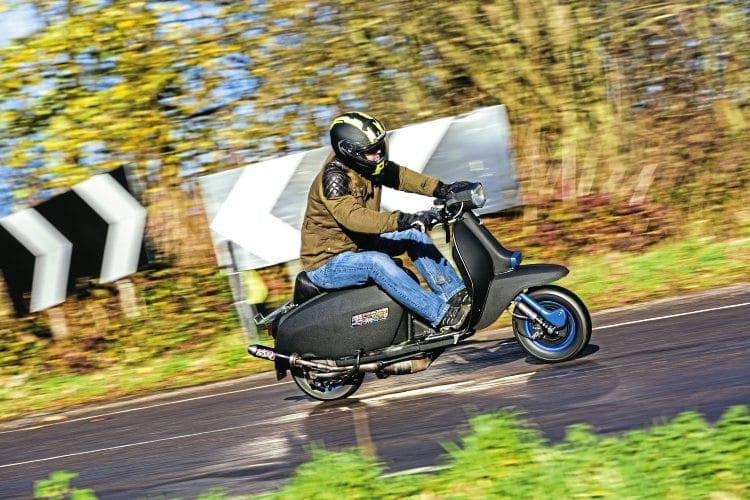
So am I saying it has no power and doesn’t wheelie?
Am I bollocks. Let me tell you exactly what the Quattrini kit is like… it’s smooth, very smooth. The piston weight seems perfectly balanced to the crank in that respect, and doesn’t transmit any detectable vibrations to the rider, as often seen with big thumper engines. Those of you experienced with larger bore engines, or anything running a heavy piston, will have probably experienced the vibrations I’m talking about… especially when run with a crank which is contributing to the problem. If anyone wants to delve into that side of things a bit deeper, check with Rich Taylor of Gran Turismo, he has a lovely chart of various branded cranks, and which ones balance out the best…but I digress. Okay, so it’s smooth… but what else? Well, it’ll set off from barely above tick-over. Sound like a crosser to you? No, me neither. I repeatedly tried launch, after launch… taking the revs lower and lower each time, Chiselspeed had got this setup just lovely with the right carb, pipe and ignition combo, to ensure the utmost of sedate launches are possible. When I say sedate launches, I don’t mean something struggling to pull away and offering no power other than a choked-up chug-chug-chug, which is often the case with tuned engines. This had oodles of very clean and flexible torque to smoothly glide away with. I liked it.

What else?
So it’s smooth, and can set off with low revs… what next? After each launch I short-shifted through the gears, to see what it was like when riding ‘off pipe’… by that I mean, before the full power kicks in and the engine becomes most efficient. Why did I do this? Because quite often, the lack of cc in these small-block engines, especially tuned ones, means that they are missing a big chuck of low down power, and are quite ‘rough’ to ride under the power band, constantly ‘wanting to go’ or feeling like they are being ‘held back’ before they then launch into a rev-based frenzy. That was not the case with this engine, it’s very flexible. Under the power band, it rode ‘off pipe’ with such a lovely chunk of torque, that it was immediately noticeable that you didn’t have to wring its neck in order to make good progress… you could actually have a very enjoyable and very calm ride in that respect, if you desired to do so. So it sounds like this Quattrini powered unit will suit a lot of rally going scooterists, so far so good.
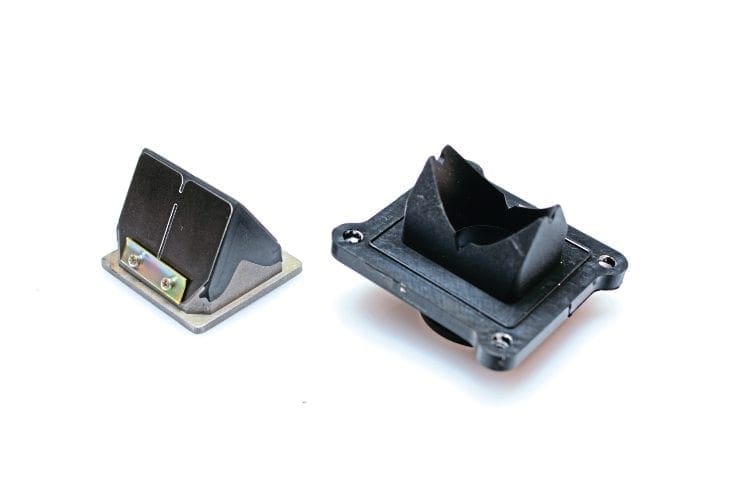
Well is it just a touring hack then?
No, it’s not, and therein lays the endearing quality which makes this such an enjoyable engine to ride. If you want to slowly roll on the throttle in fourth gear, you can adjust the revs, power, and speed accordingly, and in a very controlled manner too — no sudden rush of blood to the head, yet still the reassuring pull of torque. Conversely, if you want to knock it down a cog and jam the throttle wide open just as the power kicks in, then yes, the front end will lift. You can take this engine through each gear very swiftly and then sit and cruise, no problem… or wind it on and have some serious fun.
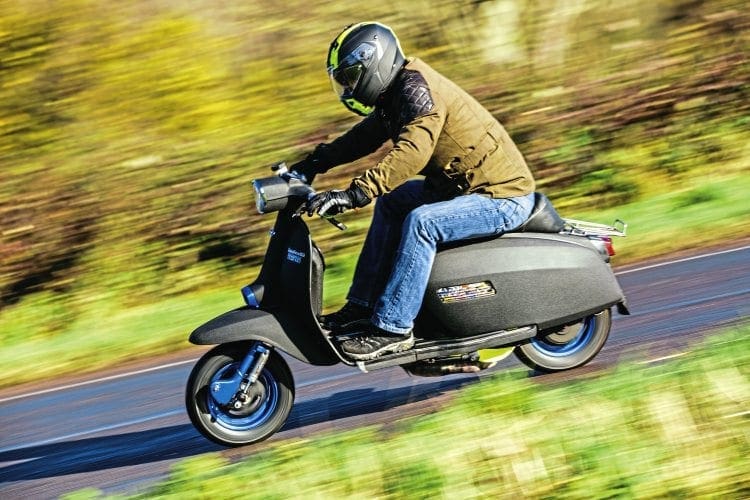
The peak power of just under 24bhp is achieved at a positively sedate 6200rpm, and the engine still has over 20bhp and 15lb-ft at 7250rpm, yet continues to rev close to 8000rpm, if you want to hold it at wide open throttle for that long. In terms of speed, when running a GP200 gearbox with 19/46 sprockets (4.84 final drive) then you’d see 65mph cruising speed at peak rpm. This is perfect for group riding and making good progress. You can still stretch its legs to an easy 75mph for overtaking, and with a bit of throttle open/ head down action, maybe see a genuine 80mph. Now that sounds like an appealing engine for a lot of riders.
Longevity
Quality wise it’s a bang-tidy bit of kit, Max has used high-spec components, the kit is well finished, the porting layout provides a flexible and powerful engine. What’s not to like? As with any engine, if you have ‘fast Bob’ from your local club slap it on with a bit of elbow grease n’all that, you can expect to be at the whim of the gods, and Bob’s beer money, in terms of reliability. So select correct components and build carefully, as you should with all engines, and I’d suggest you’ll have something very rewarding on your hands. Chiselspeed have this particular engine setup with a Mikuni TMX28mm, one of their own cranks using a KTM300 117mm con-rod, an Mtech Pro ignition unit, a five-plate clutch and their own CST10 touring pipe.

For those wanting a few extra rpm and mph, the CST11 pipe offers that, but at the expense of the lower-rev range… which in my opinion defeats the point of the kit. I’m sure however, those who want to start experimenting with long stroke cranks and different pipes (sounds like my old job) will be sure to find more and more power, a 62mm crank (if it all measures up and fits okay) will take this baby up to 225cc! Food for thought.
Show me the money
The kit has an RRP of £650, the pipe £350 and the M-tech Pro ignition unit is £150. If you already had a running base unit of say a GP125 engine in your scooter, you could add a bearing/ seal/gasket kit for £100, a five-plate clutch at £50, new chain/sprockets at £100, TMX carb at £150, and a 58/117mm crank at around £200. If you are capable of building that yourself, then a simple air leak/pressure test and a £125 dyno day will see you laying out around £2000 for a serious motor. If you need the base engine and engine building skills factoring into the equation, then your total bill might look closer to £3250 all inc. Not bad money for something so versatile.
Dan



